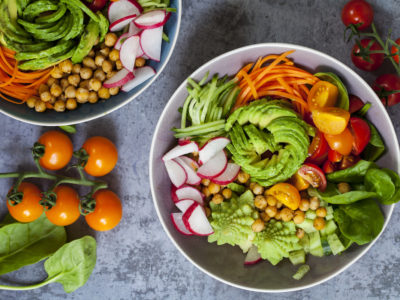Table of Contents[Hide][Show]
Feeling better could be as simple as a minor dietary change. One might guess that gastrointestinal symptoms would be related to what a person is eating. But often people don’t realize that things like joint pain, headaches and sleeplessness can also be attributed to diet.
Why An Elimination Diet?
Even if you’re eating a seemingly healthy diet, you may still be consuming something that causes symptoms like skin issues, digestive upset, headache, and joint pain. Irritating foods, even if they don’t show up on an allergy test, can contribute to the following conditions:
- Allergies, including things like dust and mold
- Arthritis
- Asthma
- Atherosclerosis
- Autoimmune disorders
- Chronic fatigue
- Eczema and acne
- Hyperactivity
- Insomnia
- Irritable bowel
- Learning disabilities
- Migraines
- Mood disorders, including anxiety and depression
- Neurodegenerative diseases, including Parkinsons and Alzheimers
- Nutrient deficiencies
- Obesity
While there are a variety of tests that can be done to determine food sensitivities, the current gold standard is an elimination diet. Nothing is more illuminating than removing potentially irritating foods for a while, then reintroducing them one at a time to see how you feel.
It’s Easier than You May Think
It may seem complicated or not very fun, but isn’t it worth making changes for just a few weeks in order to potentially feel better for the rest of your life? You might be surprised at how simple it really is and how good you end up feeling. Often times, people don’t even realize they have symptoms until they experience what it’s like to live without them. And you might discover new foods you love along the way!
Here’s What to Do
For four weeks, remove all potentially offending foods. If there is anything in your diet that you think may be a problem for you, add that to the list. If you’re not sure, a good bet is to start with the eight foods that cause 90 percent of reactions, as well as processed foods and non-foods like alcohol. Processed foods are full of chemicals that our bodies perceive as toxins and responds with inflammation. So, here is your complete list of foods to remove:
- Alcohol
- Corn
- Dairy
- Fish and shellfish
- Gluten
- Nuts
- Peanuts (actually a legume)
- Processed food
- Soy
- Sugar
- If you have an autoimmune condition, remove eggs and nightshades as well
- For some people, caffeine. If you don’t think it’s an issue for you, try to at least stick to the minimum needed.
4 Tips For Success
- Be Vigilant. Leave these foods out 100% of the time. Read labels, be very careful about eating out, and make sure you pick a time period that doesn’t include a vacation or event when keeping on track will be very difficult.
- Keep a journal. This is not mandatory, but might be extremely helpful in determining any change in how your feeling. It could be as simple as listing your symptoms and rating the level of severity on a 1-10 scale every few days.
- After the four weeks is up, reintroduce one food at a time. Start with the foods you think are the least suspicious. Eat this food at every meal for a day, then wait two to three more days to see if you have any changes in the way you feel. Symptoms can take up to 72 hours to show up!
- If you react, take the offending food back out of your diet. You can try it again later. Once the symptoms have cleared, try the next food.
What’s Left to Eat?
We get so accustomed to eating the same foods over and over again that we can forget there’s a whole world of food options out there. With the exception of those on the list above, just eat real food.
- Eat lots of fresh vegetables, like organic greens, carrots, broccoli, squash, whatever you like! Just leave out the nightshades (potatoes, tomatoes, peppers and eggplant) if you have an autoimmune condition.
- Have some protein like legumes, organic poultry and grass-fed beef.
- Include healthy fats like coconut oil, olive oil and avocado in every meal.
- Enjoy some whole grains if you’d like.
- Eat limited fresh fruit.
- Have a little natural sweetener like honey and maple syrup if you’d like.
- Enjoy all the fresh herbs and seasonings you want.
Before you start an elimination diet, be sure to find some recipes to try and plan to always have snack food on hand wherever you go. This will help you avoid grabbing whatever’s in reach when you’re suddenly hungry or there are tempting treats in the office breakroom. Planning extra time for shopping and preparing food ahead of time will make a big difference in your level of difficulty.
Track Your Symptoms
If you’re journaling, be sure to continue as you enter the reintroduction phase. If not, now is the time to start. Pay attention to your symptoms and continue to rate them with each reintroduction day and the days following. Think about things like bloating, constipation, diarrhea, joint pain, headaches, skin, sleep disturbances, fatigue, brain fog and hot flashes, as well as anything else that has been bothering you.
Once you know what foods are a problem for you, leave them out and enjoy living symptom-free!
You May Also Like…




